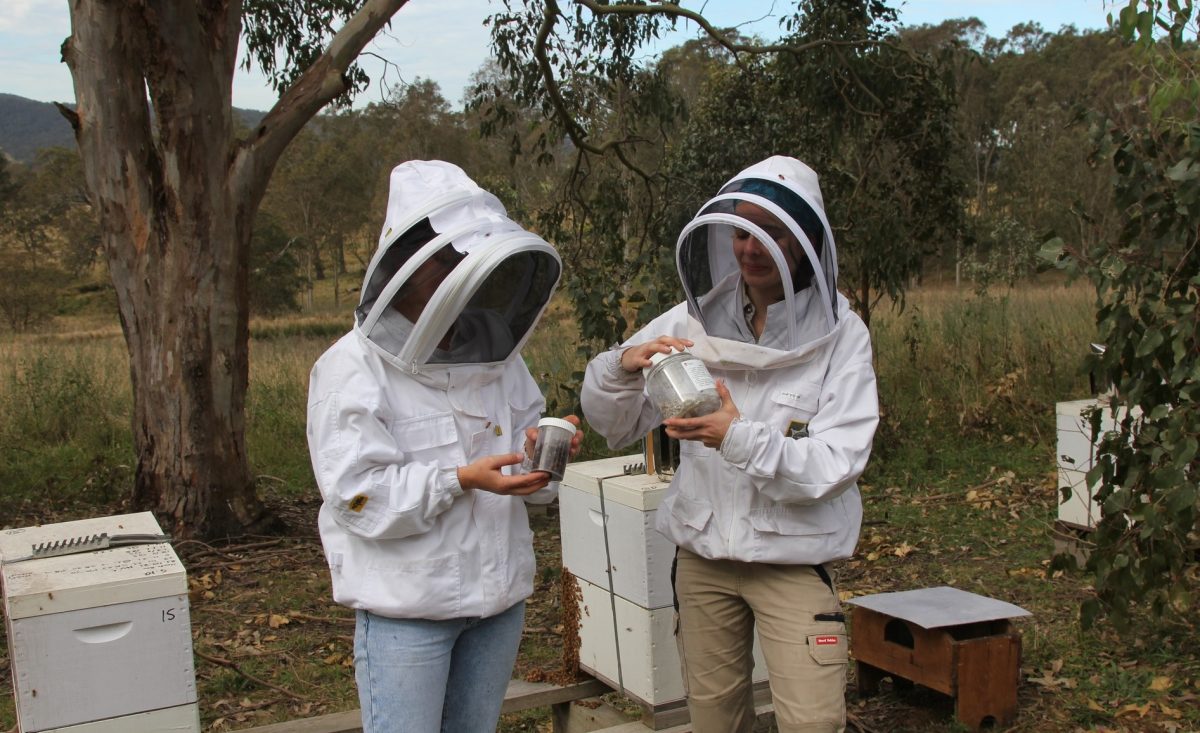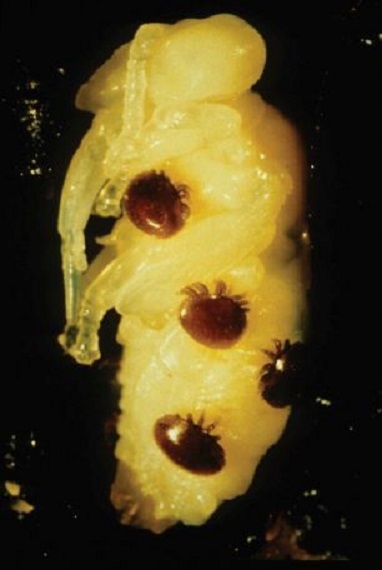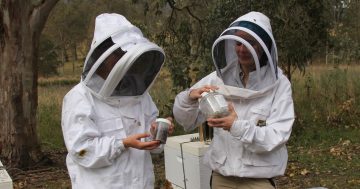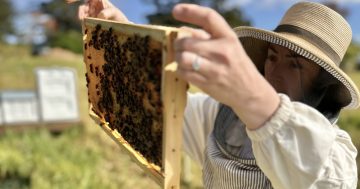
Field teams from NSW DPI and Local Land Services have been testing hives within the surveillance zones to help eradicate varroa mite. Photo: NSW DPI Biosecurity Facebook.
A mighty small insect has been found in Barrack Heights and other locations as far south as Bega, and that’s bad news for beekeepers.
The varroa mite is so tiny multiple mites can hitch a ride on a honeybee. That’s how it travels from hive to hive, leaving thousands of bee casualties in its wake.
The parasitic pest was first detected in NSW in June 2022. More recently it has been found in hives around Barrack Heights, Nowra and Bega.
Tamara Prentice is the Department of Primary Industries coordinator for the transition to management of the mite.
She said varroa could kill an entire hive within 66 days and urged beekeepers to be dilligent about checking their hives at least monthly.
“The positive report in Barrack Heights is consistent with what we’re seeing around the area,” she said.
“There are very high mite loads in Nowra and have been for a while. When we see high loads that indicates they’re spreading.
“When they get to a certain level and the hive they are in is about to die they recognise what’s going to happen and get on a bee and abscond to another hive.
“We are seeing hives suffering and dead within 66 days of the mites’ arrival.
“It’s heartbreaking. We talk to people who have had their bees for a long time and have a real affinity for them.
“If you monitor your hives monthly you can keep them safe.”

The varroa mite attacks drone and worker honeybees. Photo: NSW DPI.
Tamara said the positive identification of varroa mites in Bega was so far limited to one hive and might be a result of hive movement rather than the natural spread of the pest.
“There are no other reports so far, so we really encourage people in the area to check on their bees and surveil their hive health,” she said.
For affected beekeepers there are a number of options in Australia for managing mite infestation and as long as it is caught early it doesn’t need to be a death sentence for the hive.
There are chemical and non-chemical treatments available for varroa mite, and the DPI has experts available to visit beekeepers and help them understand how to best manage an infestation in their hives.
There are also a number of free online resources available through the DPI, including a heatmap showing the spread of the pest.
One positive bit of news is that native bees are not affected by varroa mites.
However there are so many wild European honeybees in Australia they have become a naturalised part of the ecosystem.
Tamara said a large number of those wild hives were likely to die out due to varroa, and it was unknown what consequences that might have.
“Some industries rely on the wild honeybee population for pollination,” she said.
“As they die out those industries will have to rely on commercial pollination. We are doing research into other options for pollination, but there is still a lot of work to do.
“We are hearing reports that in areas where there are no more European honeybees they’re seeing higher populations of blue banded bees.
“There’s also talk that without European honeybees in the wild, more tree hollows have become available, which could be an advantage to native wildlife.
“But this is all anecdotal, and it’s very early days. We’re all learning on the run.
“We’re a resilient mob in Australia and we’re going to have to learn and respond as best as we can.”











